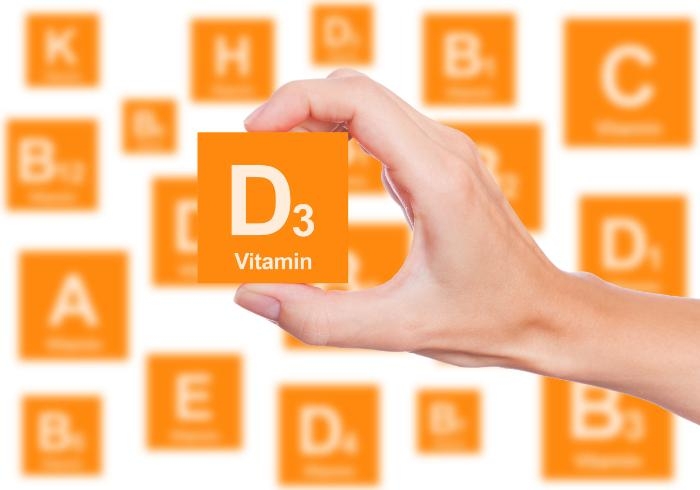Vitamin D Deficiency in Developing Countries

Recent evidence suggests that inadequate sun exposure is the most important factor for this global pandemic as very few foods naturally contain vitamin D (wild-caught salmon and UV exposed mushrooms). Analysis in children and adults indicate that dietary sources are exceptionally inadequate in providing the Recommended Dietary Allowances (RDA) for vitamin D. In the population of developing countries, cutaneous production of vitamin D is further limited by increased melanin content of skin or sun avoidance by use of sunscreens, extensive clothing cover due to socio-cultural practices or staying indoors for most of the day.
Deficient vitamin D status can be corrected either by vitamin D fortification (addition of micronutrients to processed foods) or supplementation (the provision of relatively large doses of micronutrients, usually in the form of pills or capsules). Vitamin D fortification is an effective and passive way to increase vitamin D intake in both the general population and vulnerable groups. However, it mandates political commitment and involvement of various ministries (health, agriculture and social welfare) to develop national strategies for a better vitamin D status in the population. In developing countries, where vitamin D fortification initiative is lacking, supplementation is the only alternative.
Studies have shown that multiple supplements of vitamin D are available. The two common forms are vitamin D3 (alfacalcidol, cholecalciferol, and calcitriol) and vitamin D2 (ergocalciferol). Evidence suggests that cholecalciferol is superior to ergocalciferol in terms of potency, elevating and sustaining 25 (OH) D concentrations and maintaining the storage form of vitamin D. Majority of preparations available in the market contain vitamin D3 (99.9%). About half of the preparations (46.5%) contain calcitriol in the form of tablets or capsules of 0.25 mcg. Calcitriol has a rapid onset of action with a short half-life of 6 h. It is most useful in chronic kidney disease and type I and type II vitamin D deficient rickets (VDDR).
Though calcitriol is the most commonly available form, it is not the preferred agent for the treatment of nutritional deficiency or stoss therapy (single large oral/ intramuscular therapy). It is associated with a high incidence of hypercalcemia and requires serum calcium monitoring. Furthermore, when calcitriol is used as a supplement, 25(OH) D levels do not indicate clinical vitamin D status. Calcitriol does not build up stores and is an expensive preparation. Around 43% of the preparations contained alfacalcidol (25 dihydroxy cholecalciferol). It is most commonly available as tablets or capsules of 10 IU, usually in combination with calcium (76.5% of alfacalcidol preparations). Alfacalcidol has a rapid onset of action with a half-life of 2–3 weeks. It does not require hepatic 25-hydroxylation, and is, therefore, most useful in patients with liver disease. Approximately 10% of vitamin D3 preparations are available as cholecalciferol. It is the inactive, unhydroxylated form of vitamin D3, synthesized in the skin from 7 dehydrocholesterol. It has a slow onset of action with a half-life of 12–30 days. Thus, it is the preferred form for prophylaxis or treatment of vitamin D deficient states.
Vitamin D can be administered daily, weekly, monthly, or every 4 months to sustain an adequate serum 25 (OH) D concentrations. A high bolus dose of vitamin D (up to 300,000 IU) can be used initially in persons with extreme VDD. Repeated boluses of high-dose vitamin D at 6- to 12-month intervals have been used in a nursing home setting, but a steady-state serum 25(OH) D concentration is likely to be maintained by more frequent, lower doses of vitamin D. An effective strategy to treat vitamin D deficient state in children and adults is to administer 50,000 IU of vitamin D3 once a week for 6–8 weeks respectively.
To prevent a recurrence, administration of 600 to 1000 IU/day is effective. In developing countries, most market preparations contain 60,000 IU and are usually recommended for 6 to 8 weeks for obtaining adequate serum 25 (OH) D concentrations. Monthly maintenance therapy is usually required and should be continued for over one year. Another study suggested that a single high dose of 120,000–180,000 IU of oral cholecalciferol was adequate to elevate 25(OH) D out of the deficiency range. However, a maintenance dose is required for sustaining the desired concentration of 25(OH) D.
AdvaCare's Vitamin D3 is also available in combination with Calcium.
See our complete Vitamins & Minerals range.
Don't want to miss the next AdvaCare article?

Recommended Content

TickZero™: High-Margin, 12-Week Flea & Tick Protection, Distributor Opportunity in LMICs


Leveraging Pharma Expertise to Thrive in Supplement Distribution


Ecuador: Importing Medicines with an International Pharmaceutical Manufacturer
